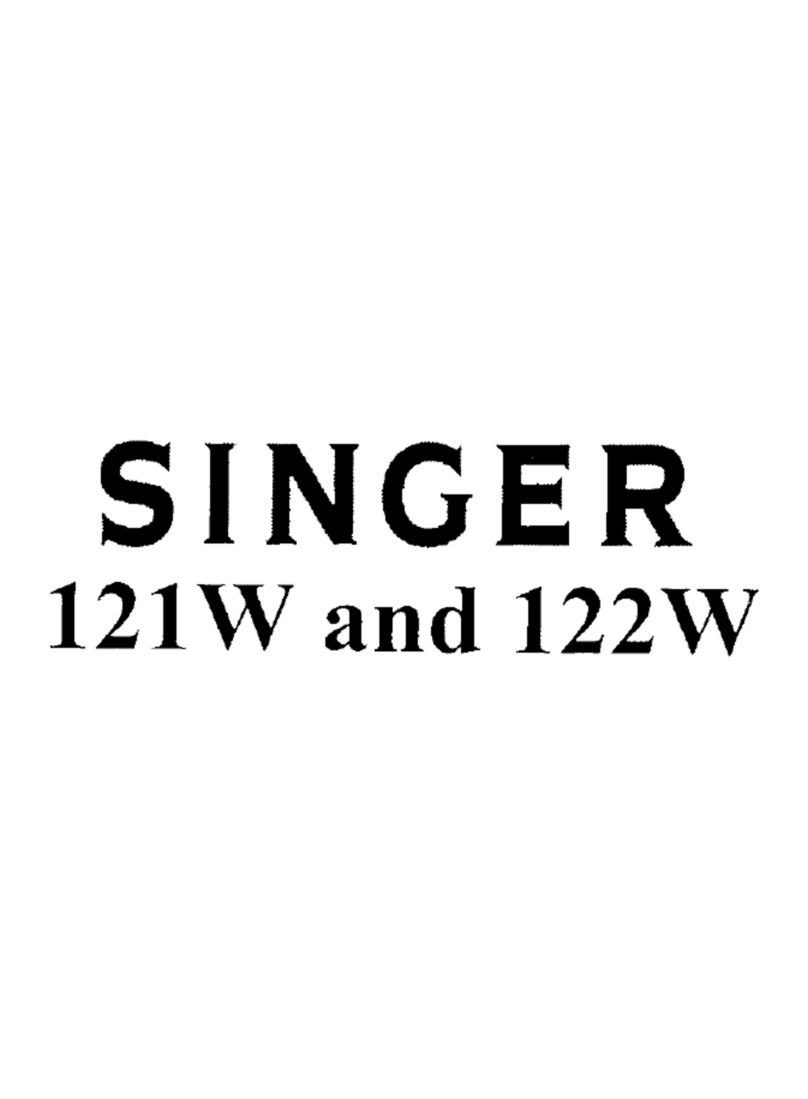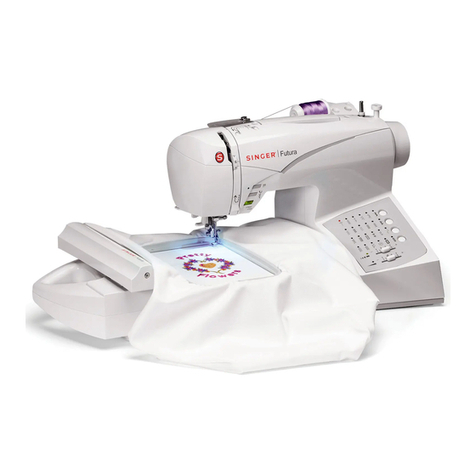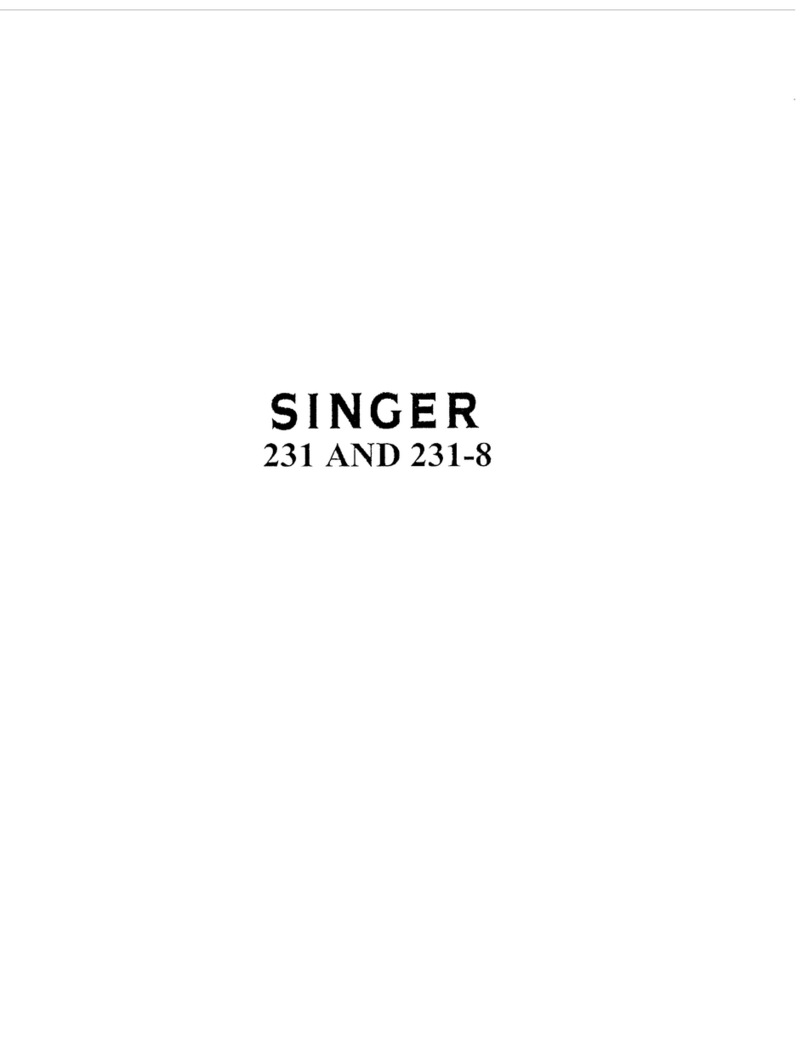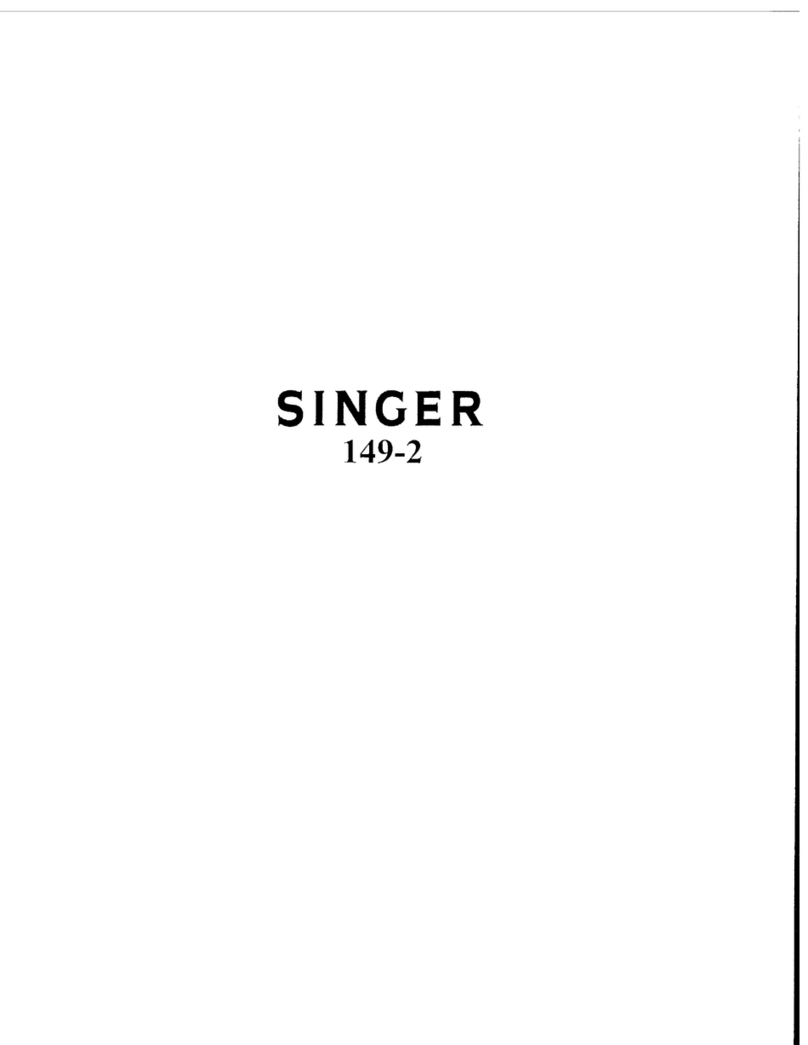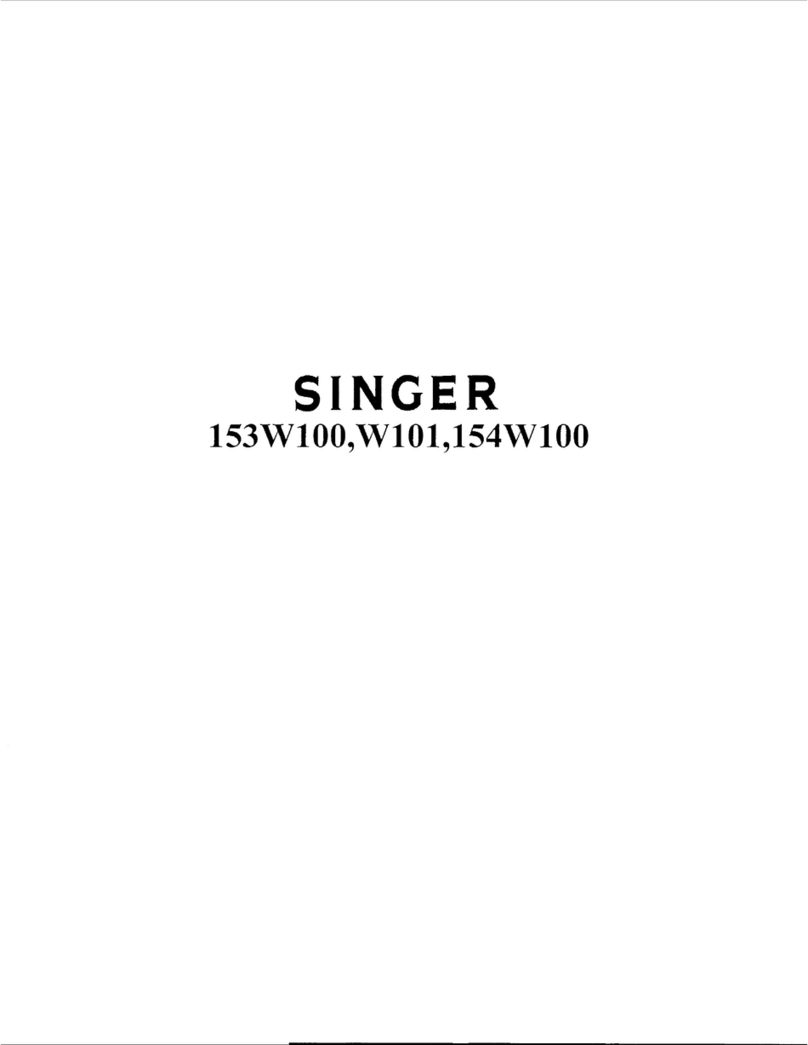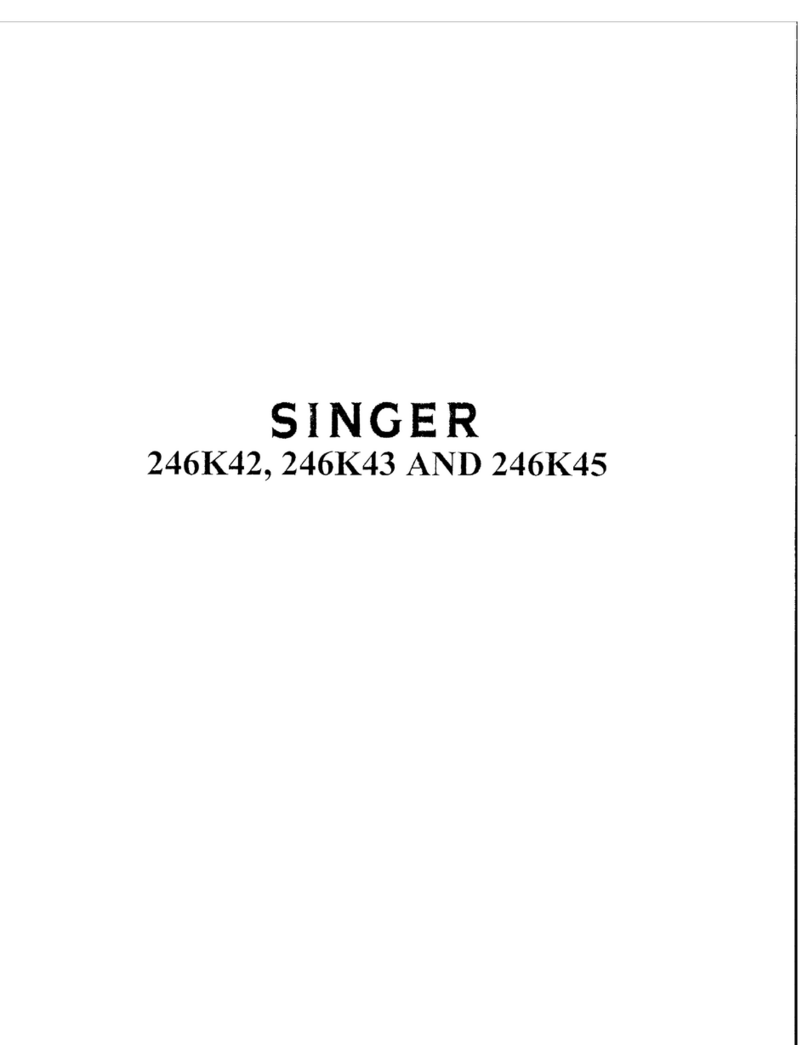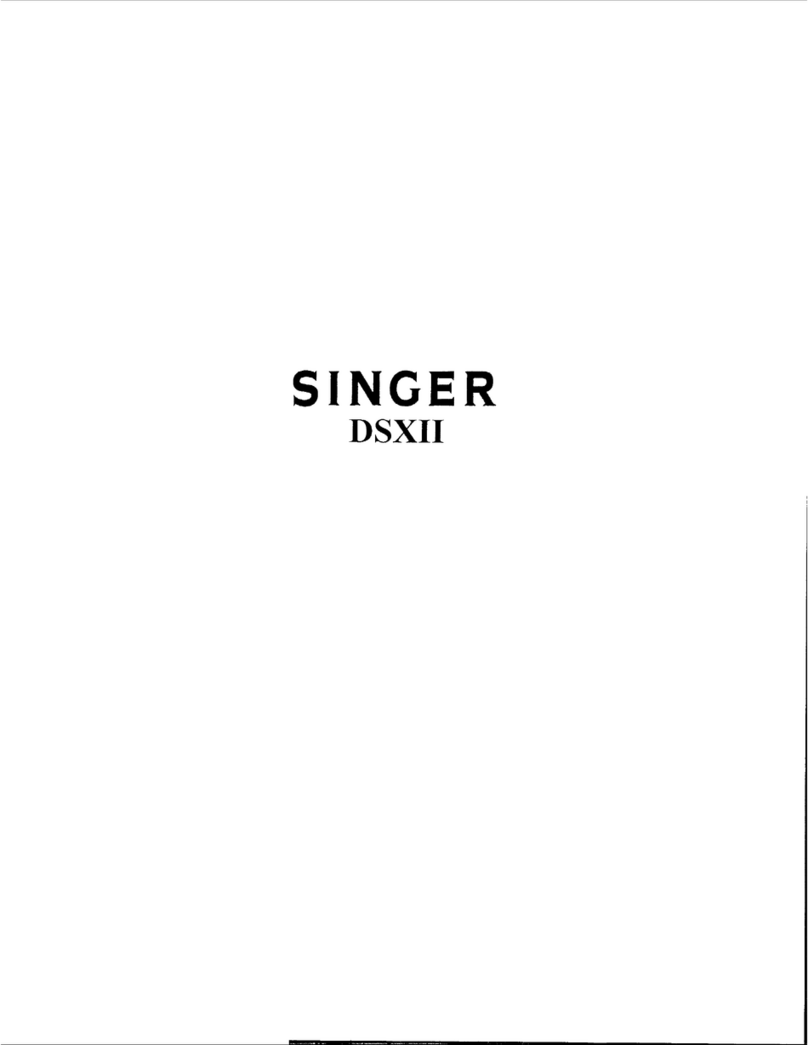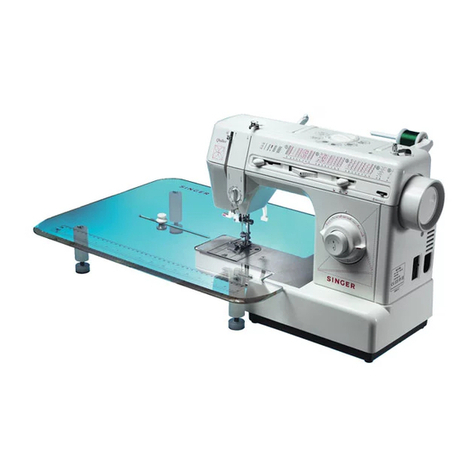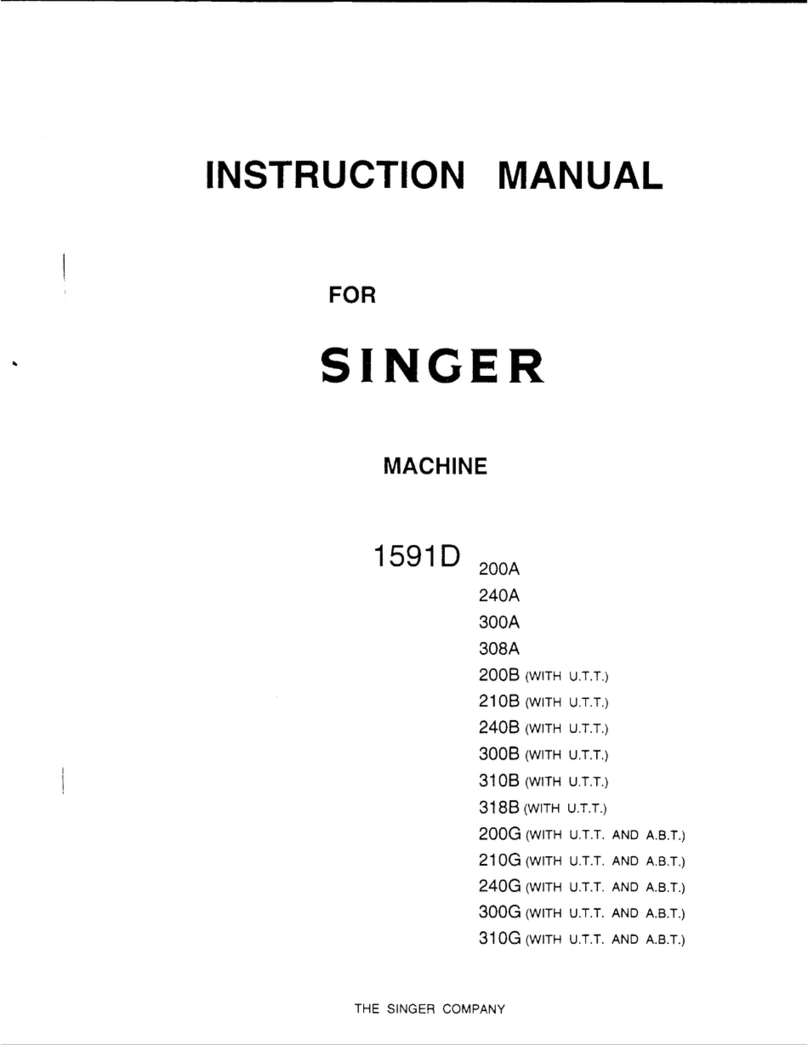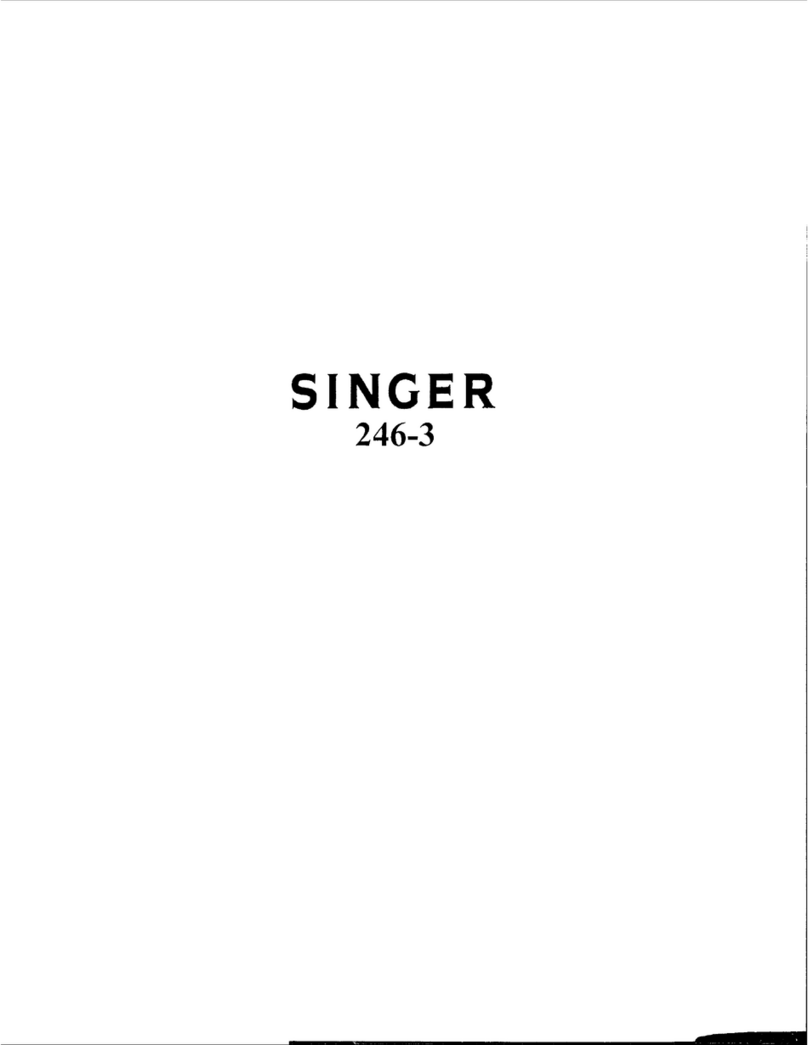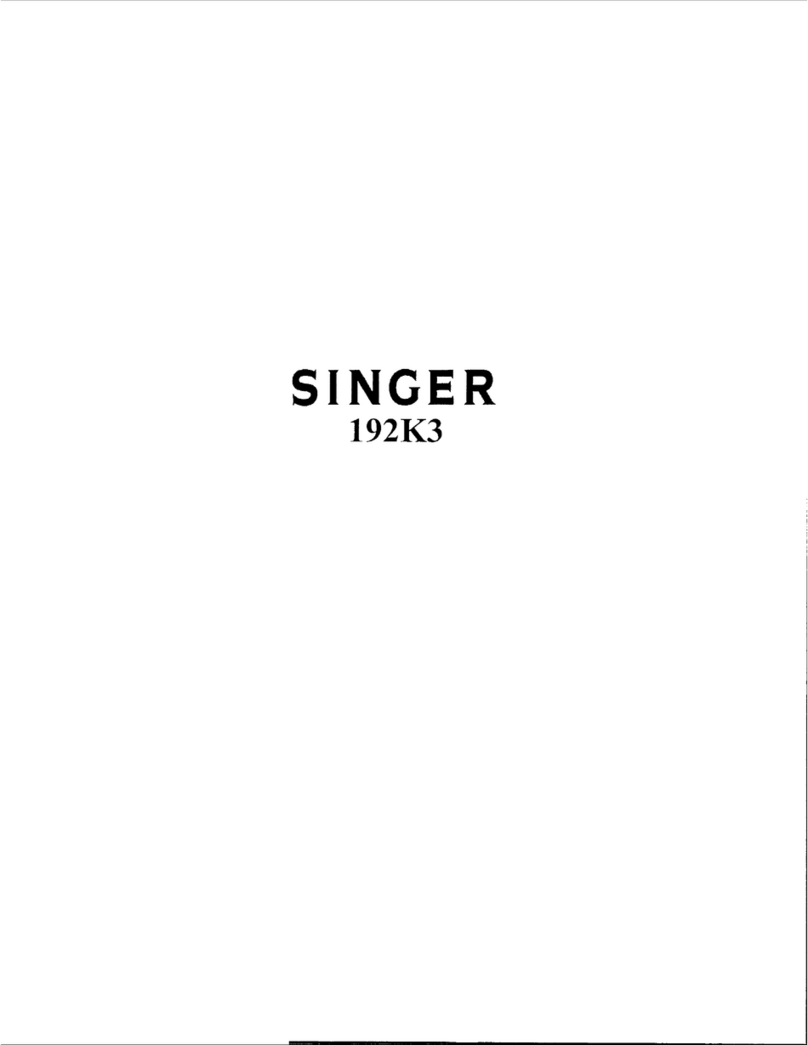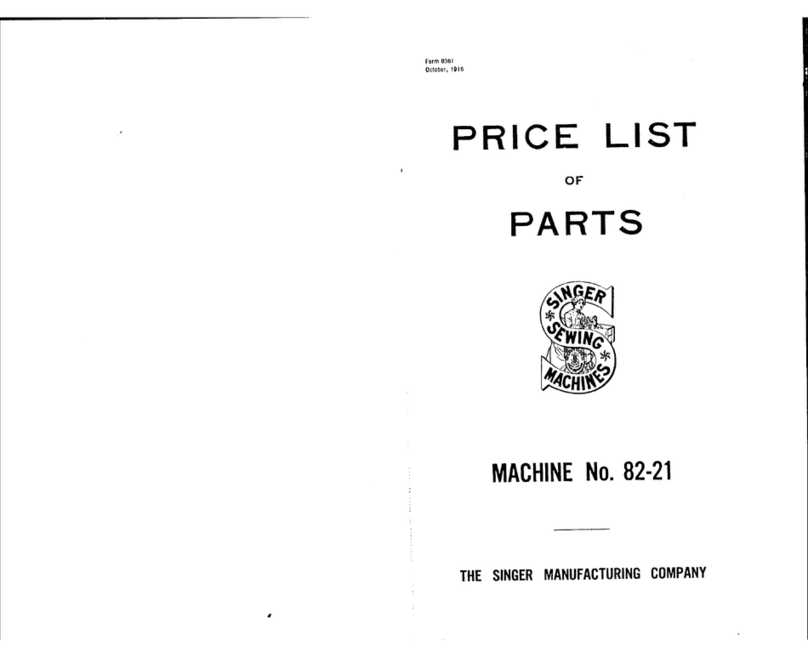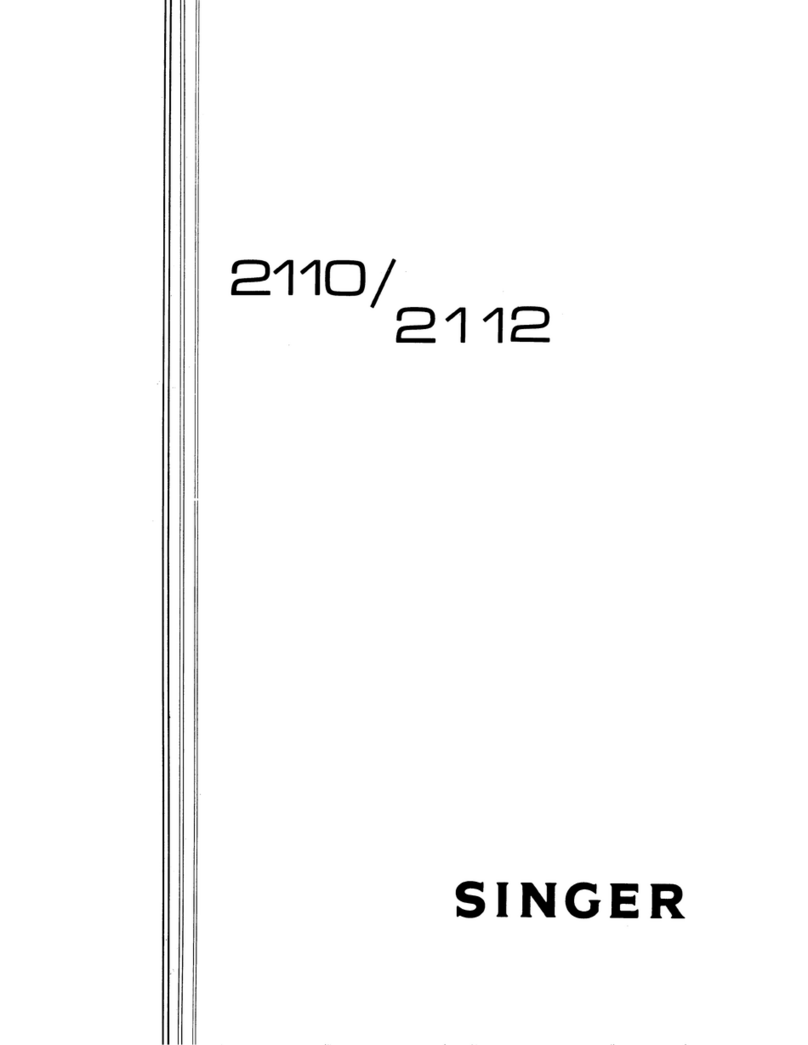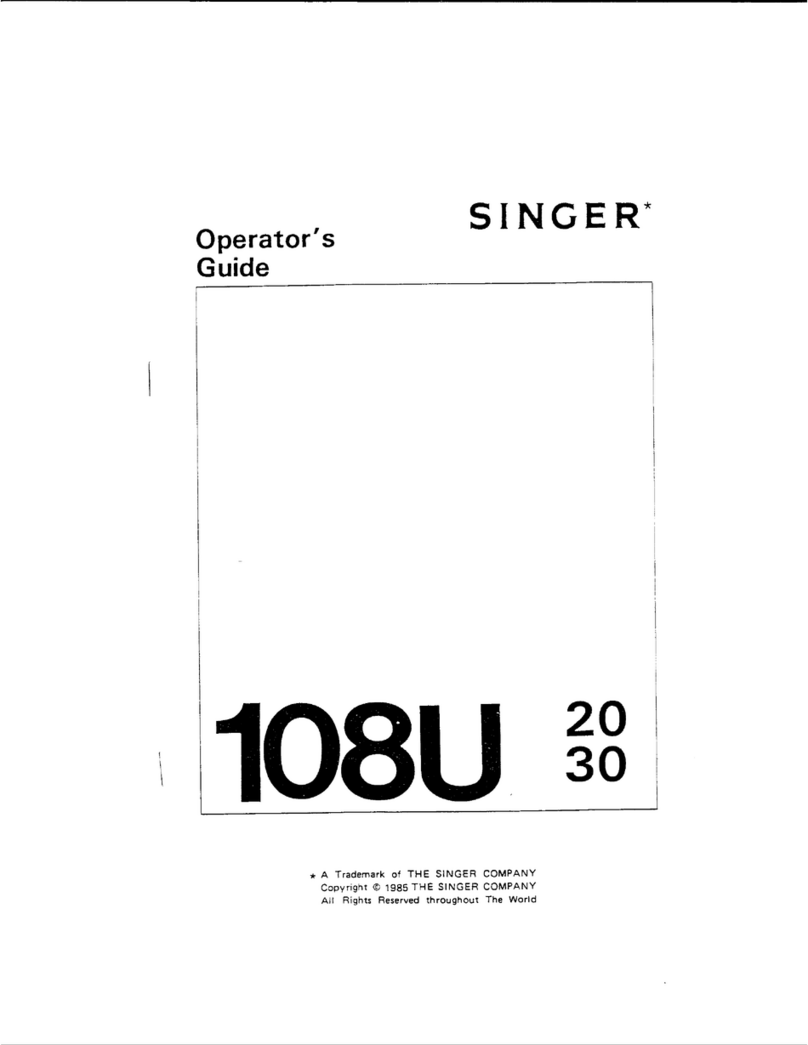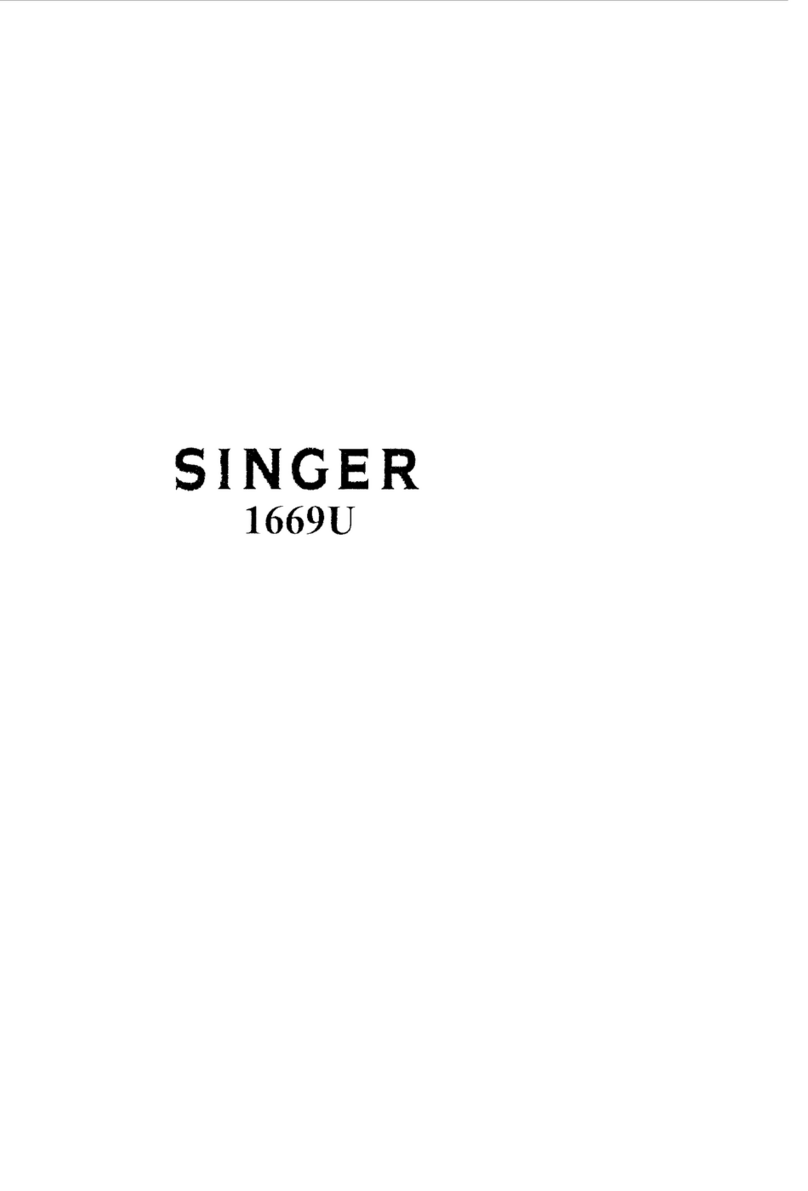
IMPORTANT SAFETY INSTRUCTIONS
When using this machine, basic safety precautions
should always be followed including the following:
Read all instructions before using this machine.
DANGER
To reduce the risk of electric shock:
•The machine should never be left unattended when
plugged in. Always unplug the machine from the elec-
tric outlet immediately after using and before clean-
ing.
• Always unplug before changing light bulb. Replace
bulb with the same type rated 15 watts. Be sure to
replace the face plate which covers the light bulb
before operating the machine.
WARNING
To reduce the risk of burns, fire, electric shock or injury
to persons:
• Be sure that the electrical voltage of the socket outlet
(wall receptacle) is the same as the rated voltage of
the motor.
• Use this machine only for its intended use as
described in this Operator's Guide. Use only attach-
ments recommended by the manufacturer as con-
tained in the Operator's Guide.
• To disconnect, turn all controls to the off ("0") posi-
tion, then remove plug from outlet.
• Disconnect the power-line plug from the socket outlet
or switch the machine off when making any adjust-
ments in the needle area, such as threading needle,
changing needle, changing needle plate or changing
presser foot, etc.
•Always unplug the machine from the electrical outlet
when removing covers, lubricating, or when making
any other user servicing adjustments mentioned in
the Operator's Guide.
• Do not attempt to adjust the motor belt. Contact your
nearest Service Center should any adjustment be
required.
• Do not unplug by pulling on cord. To unplug, grasp
the plug, not the cord.
• Handle the foot controller with care and avoid drop-
ping it on the floor. Be sure not to place anything on
top of it.
•Always use the proper needle plate. The wrong plate
can cause the needle to break.
• Do not use bent needles.
• When sewing, keep fingers away from all moving
parts. Special care is required around the sewing
machine needle.
• Do not pull or push fabric while stitching. This may
deflect the needle causing it to break.
• Before removing the bobbin case, remove plug from
the socket outlet.
• For double insulated machines, when servicing, use
only identical Singer replacement parts. See instruc-
tions for Servicing of Double-Insulated Appliances.
Never operate the machine if it has a damaged cord
or plug, if it is not working properly, if it has been
dropped or damaged, or dropped into water. Return
the machine to the nearest authorized dealer or
Service Center for examination, repair, electrical, or
mechanical adjustment.

